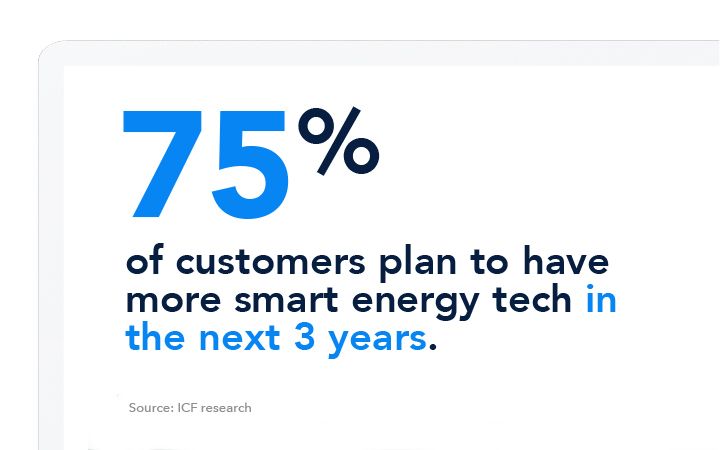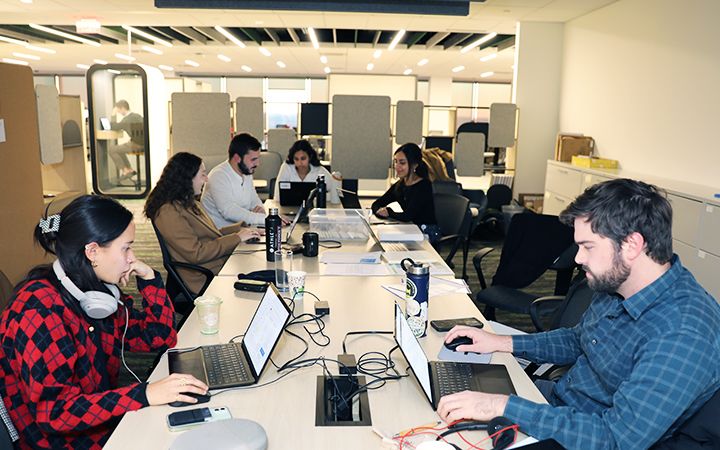Energy customer engagement and advertising
Extraordinary insights: A full-service advertising agency with industry-leading energy experts.
We have unparalleled knowledge of the utility industry and combine that with cutting-edge marketing and media strategy, award-winning creative, data analytics, and deep customer insights. We will help you navigate and boost program participation, while building your brand.
Our work

50+
40M+
3x-5x
225+

We know the utility industry—and customers—better than anyone else
Reaching utility customers is our specialty. We have secure access to anonymized usage data from hundreds of thousands of customers, and we use proven behavioral science and cutting-edge technology to build proprietary propensity models that help us understand various customer segments. The result is customized campaigns and messages that move your residential and business customers from consideration to action, lifting utility customer response rates by 3-5 times.
Discover Sightline(R), our customer analytics engine for utilities.

Achieve your business goals with omni-channel creative campaigns
Our award-winning utility campaigns excel in multi-channel marketing. With our powerful in-house media buying, we consistently exceed campaign goals, delivering up to 20% added value. Our unique skill lies in stretching utility program dollars. Immediate impact plus ongoing optimization—that’s our winning formula.
We bring our energy experts into the marketing process
Great ideas can come at any time, from any place. We bring a wide group of experts to the table, extending beyond marketers. Our team includes specialists in energy efficiency programs, grid electrification, cybersecurity, electric vehicles, climate, and more. This deep bench and business knowledge accelerates our marketing strategy. We also connect our utility marketing clients with each other, sharing knowledge that’s relevant and actionable.

Our services
Customer marketing, advertising, and engagement
- Omni-channel marketing strategy and implementation
- Media planning and buying
- Brand and corporate communications strategy and implementation
- Business customer engagement account-based marketing
- Creative design and production
- Low to moderate income customer marketing
- Email marketing
- Social media management
Customer insights and research
- Audience segmentation
- Customer behavioral insights
- Journey mapping
- Media and marketing analytics
- Primary and secondary customer research
Marketing technology
- Sightline® - Customer engagement platform
- Account-based marketing (ABM) services
- Marketing automation
- Marketing technology advisory
- B2B customer intent services
- Propensity modeling
We market over 200+ residential and business programs that provide real results for our clients.
- Behavioral-based programs
- Building electrification
- Customer satisfaction
- Demand response and demand management programs
- Electric vehicle programs
- Energy efficiency awareness
- Energy savings kits
- Gas efficiency programs
- Home energy assessments and quick home energy check-ups
- Low- and moderate-income customer programs
- Loyalty and rewards programs
- Midstream HVAC and appliances
- Online marketplaces
- Pilots and new technology assessments
- Residential new construction programs
- Retail products programs
- Schools-based programs
- Time-of-use rates
- Account-based marketing
- Agricultural energy efficiency
- Beneficial electrification
- Building electrification programs
- Building tune-ups and retro commissioning
- Commercial new construction programs
- Fleet electrification programs
- Food services
- Gas efficiency programs
- Midstream HVAC
- Multifamily programs
- Outdoor lighting
- Pilots and new technology assessments
- Prescriptive and custom retrofit programs
- Small business direct install
Upcoming events
Featured experts
Our insights
Related industries and services